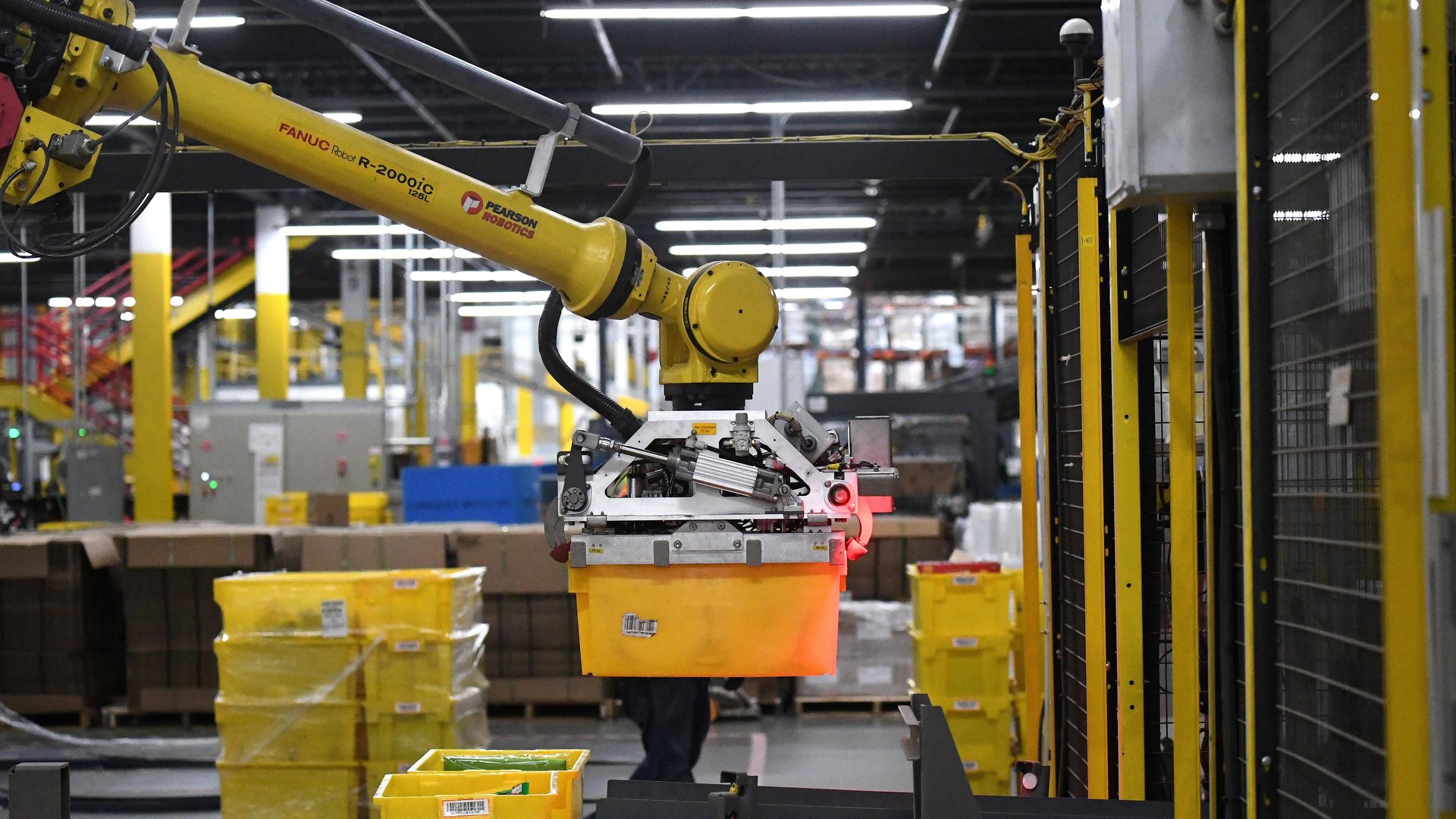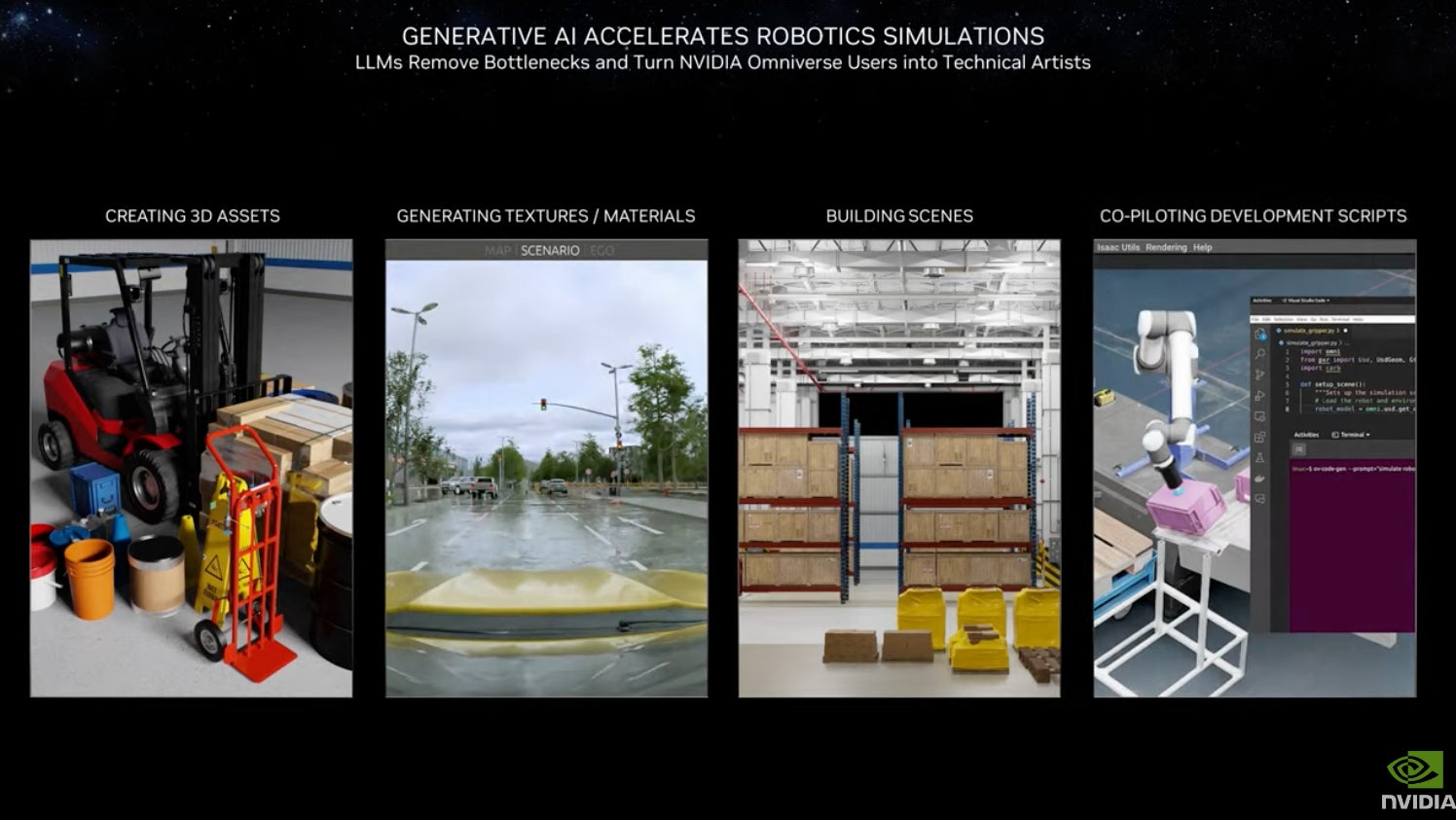The industries where AI-powered robots will arrive next, according to Nvidia
Generative AI could make it faster to bring new robots from idea to reality

Construction, retail, healthcare, and agriculture are the next wave of industries that will adopt AI-powered robots, according to Deepu Talla, vice president of embedded and edge computing at chip maker Nvidia.
Suggested Reading
Autonomous robots in logistics, warehousing, and manufacturing were the first use cases with the biggest need, Talla said during a conference call on Monday (Jan. 8). Employers in those industries have used the machines to boost efficiency, cut costs, and tackle labor shortages, he added.
Related Content
Today, hundreds of thousands of deployed robots are getting smarter, thanks to AI upgrades, Talla said. Large-scale fulfillment centers and manufacturing plants keep adding more smart robots, he said.
Take Amazon, for instance. The US’s second-biggest private employer has been using robots in its fulfillment centers for years. In November, Amazon announced that it was adding AI-powered sorting machines and robotic arms, which are designed for speed and safety, to its warehouse operations.
How generative AI is changing robot development
In the past year, generative AI has disrupted how people write content and showed us potential productivity savings. Talla said it can also speed up the process of bringing robots from proof of concept to deployment.
Robots often operate in dynamic environments where the surroundings are unpredictable, partly thanks to the presence of humans. Simulation teams, which test and train virtual robots before machines get built, can use Picasso, Nvidia’s text-to-3D generative AI model, to add realistic assets such as rain and rust to the virtual scene, Talla said.

“When testing or training a robot, diversity of environments is essential to ensure the robots can generalize to the real world,” he explained. A ChatGPT-like tool allows users to create thousands of accurate robot scenarios in minutes rather than days, Talla said.
